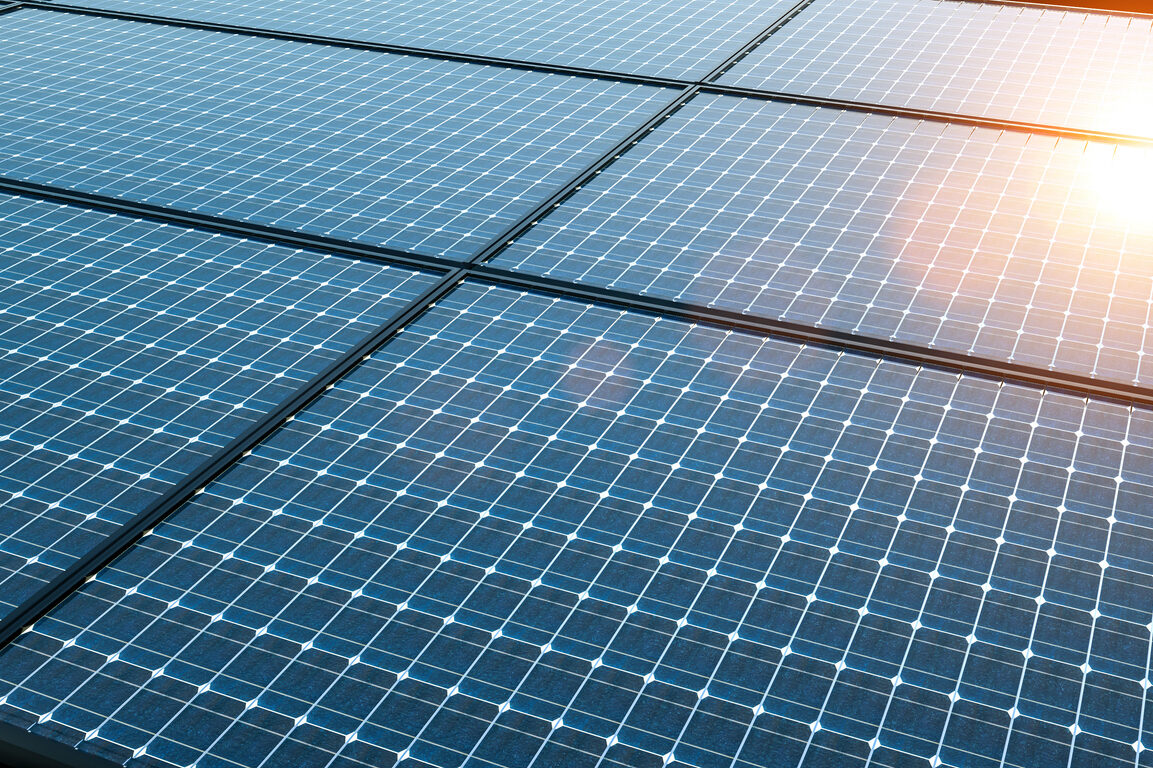1. Solid-State Batteries Unlocking Long-Duration Storage

Traditional lithium-ion batteries helped us start the clean energy shift, but they’re running up against serious limits. Solid-state batteries could be the answer. By replacing the liquid electrolyte with a solid one, they improve safety, last longer, and store more power. This makes them ideal for electric vehicles and grid-level storage. Utilities can use them to store excess solar or wind power and release it during cloudy days or peak demand.
What sets them apart is how effectively they tackle one of renewable energy’s biggest headaches: intermittency. Solid-state batteries are better suited for long-duration storage, and researchers are making them more affordable every year. With major automakers and tech firms investing billions, these batteries could soon become the backbone of reliable clean energy. Their durability also means fewer replacements and lower environmental costs over time, making them a sustainable solution for both homes and cities.
2. Deep-Rock Geothermal Tapping Hidden Heat
Deep-rock geothermal energy is pulling heat from far beneath the Earth’s surface to generate consistent, clean power. Unlike traditional geothermal systems that rely on shallow heat sources or hot springs, this approach drills miles into solid rock where temperatures remain stable. The technology uses closed-loop systems that circulate water underground, absorb the Earth’s heat, and then bring it to the surface to power turbines.
This method doesn’t depend on rare geological features, which means it could be deployed in far more places than previously imagined. Experts see enormous potential in regions like Nevada and Utah, where geothermal resources are plentiful. With advancements in drilling and enhanced geothermal systems, this form of energy could become a dependable part of the renewable mix. Because it operates 24/7 regardless of weather, deep-rock geothermal has the potential to provide clean, reliable baseload power without the carbon emissions tied to fossil fuels.
3. Ultra-Efficient Green Hydrogen Electrolyzers
Green hydrogen has long been seen as a potential clean fuel for heavy industries and long-haul transportation. Now, thanks to ultra-efficient electrolyzers, it’s becoming more viable. These devices split water into hydrogen and oxygen using renewable electricity. The latest models operate with over 90 percent efficiency, drastically reducing the cost and energy needed to produce hydrogen fuel. This pushes green hydrogen closer to competing with fossil fuels in the open market.
This is great news for sectors like aviation, steel, and shipping, where electrification alone can’t solve every problem. The hydrogen produced burns clean and emits only water, offering a pathway to decarbonize some of the most stubborn industries. With countries like the U.S., Germany, and Australia investing in hydrogen infrastructure, the road to a hydrogen-powered economy is being paved faster than expected. These electrolyzers could be the cornerstone of clean fuel strategies for decades to come.
4. AI-Powered Smart Grids Balancing Renewable Flow
Renewables like solar and wind are powerful but unpredictable. Enter AI-powered smart grids, which use real-time data and machine learning to manage the complex energy flows from multiple sources. These systems predict energy demand, identify grid imbalances, and shift power where it’s needed most. By automatically adjusting loads and routing electricity intelligently, they help prevent blackouts and make renewable energy more dependable.
As the U.S. power grid continues aging, smart upgrades like these are essential. They’re already helping utilities across states like California and Texas to integrate more renewable energy without compromising reliability. Experts believe AI will soon be the brain behind the energy system, guiding when and where to store, dispatch, or conserve power. As electric vehicles, smart homes, and clean tech continue to grow, smart grids will ensure that the energy supply stays one step ahead of demand.
5. Fusion Energy Reaching Commercial Milestones
Nuclear fusion, the same process that powers the sun, is no longer just a futuristic dream. Recent breakthroughs are pushing it closer to commercial reality. Fusion reactors work by combining hydrogen atoms at extremely high temperatures to release massive amounts of energy without producing long-lived radioactive waste. Companies like Commonwealth Fusion Systems are already building pilot plants, with major backing from the U.S. government and private sector giants.
Unlike nuclear fission, which splits atoms and produces hazardous waste, fusion is clean, abundant, and safe. One glass of seawater could theoretically generate enough fuel to power a house for years. While challenges remain, the progress over the past few years has been remarkable. Many experts now believe the first commercially viable fusion plant could be operational in the 2030s. If that happens, fusion could become the ultimate fossil fuel replacement, providing nearly limitless clean energy for the planet.
6. Floating Solar Farms Saving Land and Water
Floating solar farms are turning lakes, reservoirs, and even man-made ponds into renewable power plants. These solar panels rest on buoyant platforms, soaking up sunlight while cooling naturally from the water beneath. This setup improves energy efficiency and prevents water evaporation, making it especially valuable in drought-prone regions. It’s already gaining ground in states like California and New Jersey.
What makes floating solar so appealing is its smart use of space. Instead of competing with farmland or urban development, it turns unused water surfaces into clean energy hubs. In some cases, floating arrays can also help reduce harmful algae growth by shading the water. As the technology becomes more affordable, more municipalities and utility companies are expected to jump on board. Experts believe it could become a crucial part of America’s renewable energy landscape, especially in regions with limited land but ample sunlight and water bodies.
7. Wave and Tidal Energy Harnessing the Oceans

Oceans cover over 70 percent of Earth’s surface, and they’re constantly in motion. Wave and tidal energy technologies aim to harness that motion and convert it into electricity. Unlike solar or wind, marine energy is incredibly predictable. Tides follow known cycles, and wave patterns are often steady for long periods. This reliability makes ocean energy a promising complement to other renewable sources.
The technology is still emerging but has already shown promise in parts of the U.S., the U.K., and Australia. Underwater turbines, floating buoys, and oscillating water columns are just a few of the methods being tested. The potential is especially exciting for coastal communities that want to reduce their reliance on diesel generators or imported energy. While scaling up remains a challenge, experts say marine energy could play a significant role in future power grids, especially as infrastructure improves and global demand for clean energy grows.
8. Electrofuel Turning Carbon into Clean Power
Electrofuel is made by combining captured carbon dioxide with green hydrogen to create synthetic fuel that mimics gasoline, diesel, or jet fuel. It’s not just cleaner to burn. It also recycles CO2 that would otherwise contribute to global warming. This makes it an attractive solution for hard-to-electrify sectors like aviation, maritime shipping, and heavy trucking, where traditional batteries fall short.
The process still requires a lot of energy, but when powered by renewables, it can close the loop on carbon emissions. Unlike biofuels, electrofuels don’t compete with food crops or require land use changes. Several companies and governments are already funding large-scale pilots, especially in Europe and the U.S. Experts see electrofuels as a powerful bridge technology that could ease the transition away from fossil fuels while keeping current infrastructure like engines and fuel stations in use. It’s clean, compatible, and closer to reality than you might think.
9. Gravity Batteries Using Weight to Store Energy
Instead of storing energy in chemicals, gravity batteries store it using mass. These systems lift heavy objects like concrete blocks or iron weights when surplus electricity is available. When power is needed, the weights are released, turning generators as they fall. It’s a simple idea grounded in physics, and it offers long-term energy storage with very little degradation over time.
Gravity batteries don’t rely on rare earth metals, making them more sustainable and potentially cheaper in the long run. Companies like Energy Vault are already testing this technology in the U.S. and Europe. These systems are especially useful for stabilizing grids powered by intermittent renewables like wind and solar. They work well in areas with vertical space such as former mines or industrial sites. Experts believe gravity-based storage could play a big role in future clean energy systems, especially as the demand for sustainable storage continues to rise.
10. Solar Thermal Fuel Bottling Sunshine for Later
Solar thermal fuel stores sunlight by trapping it in molecules that can hold heat for days, weeks, or even months. Unlike solar panels that convert sunlight directly into electricity, this technology captures solar energy and keeps it in chemical bonds. When the energy is needed, it can be released as heat to power engines, warm buildings, or generate electricity.
This opens up a new way to store solar energy without relying on batteries. It’s particularly useful in areas where sunshine is abundant but demand peaks after dark. Researchers are developing solar thermal materials that can be reused over thousands of cycles without losing effectiveness. Experts believe it could support heating and power needs in colder climates where sunlight is inconsistent. Though still in development, this breakthrough has the potential to complement solar panels by offering a reliable and flexible storage solution for renewable energy.
11. Artificial Leaves Mimicking Nature’s Powerhouse
Inspired by real leaves, artificial leaves use sunlight to convert water and carbon dioxide into fuel, just like plants do during photosynthesis. These devices typically generate hydrogen or other clean fuels by using sunlight to power chemical reactions. The result is a renewable fuel source created with nothing more than air, water, and sunshine.
The beauty of artificial leaf technology lies in its simplicity and portability. Unlike large power plants or solar farms, these leaves could one day be used in remote areas or small homes to produce their own clean energy. Experts say the technology is especially promising for off-grid regions or developing countries where traditional energy infrastructure is lacking. While it’s still in the research phase, progress has been rapid, and pilot models are already being tested in labs. The hope is to offer decentralized energy solutions that are cheap, clean, and inspired by the brilliance of nature.
12. Bio-Hydrogen from Algae and Microbes
Tiny organisms like algae and bacteria are now being used to produce hydrogen, one of the cleanest fuels available. Through natural processes like fermentation and photosynthesis, these microbes generate hydrogen gas that can be captured and stored. Because they rely on sunlight, water, and organic matter, the process is renewable and has a very low environmental impact.
Scientists are working to improve the efficiency of these bio-systems, using genetic engineering to create “super strains” of algae that can produce more hydrogen. This approach avoids the high energy demands of traditional hydrogen production methods. It’s an especially attractive solution for agricultural areas, where crop waste could feed the microbes. Experts see bio-hydrogen as a future fuel for both electricity and transportation. As research progresses, this natural method may offer a scalable and sustainable alternative that could reduce emissions without requiring expensive infrastructure overhauls.
13. Quantum Batteries Charging in Seconds
Quantum batteries are still in the lab, but the idea is electrifying. These futuristic devices would use the strange principles of quantum mechanics to charge almost instantly. Unlike traditional batteries that store energy chemically, quantum batteries would store energy in atomic or subatomic states, allowing for super-fast energy absorption and delivery with minimal loss.
If successful, this technology could revolutionize everything from smartphones to electric vehicles. Imagine charging your car in seconds or powering your home with a single quantum cell that lasts for days. Although still theoretical, initial experiments show real promise. Scientists are focusing on solving the scaling problem and ensuring the batteries remain stable outside lab conditions. Experts believe quantum batteries could one day replace or supplement current battery systems, offering a leap in both speed and efficiency. It’s a long shot, but one that could transform how we think about storing and using energy.
14. Hybrid Solar-Wind Systems for 24/7 Power
Hybrid systems combine solar panels with wind turbines to provide reliable, around-the-clock energy. These setups balance each other out—when the sun sets, the wind often picks up, and vice versa. By linking both sources with smart inverters and battery storage, hybrid systems can deliver a consistent power supply regardless of time or weather.
These systems are already being used in rural areas, farms, and off-grid locations across the U.S. They’re especially helpful in places where running power lines would be too expensive or impractical. Hybrid setups are low-maintenance and can reduce electricity costs significantly over time. Experts say their modular nature makes them ideal for small communities or emergency shelters. As solar and wind technologies continue to improve, combining them just makes sense. Hybrid systems offer energy resilience, reduce dependence on fossil fuels, and provide a clean, dependable solution tailored to modern needs.
15. Perovskite Solar Cells Pushing Past Silicon

Perovskite is a new type of material that’s turning heads in the solar industry. These solar cells are lighter, cheaper, and easier to manufacture than traditional silicon-based panels. They also perform better in low-light conditions, making them perfect for cloudy regions or indoor use. Some prototypes already rival the efficiency of high-end silicon panels.
What really excites researchers is the versatility of perovskite. It can be printed onto flexible surfaces, layered onto windows, or even integrated into building materials. This opens up new possibilities for solar power in places where panels were once impractical. Although durability and scaling remain challenges, major investments are accelerating progress. Experts believe perovskite solar cells could make renewable energy more accessible to everyday consumers while reducing installation and material costs. With continued research, this tech could be key to making solar energy a more dominant player in the clean power landscape.
